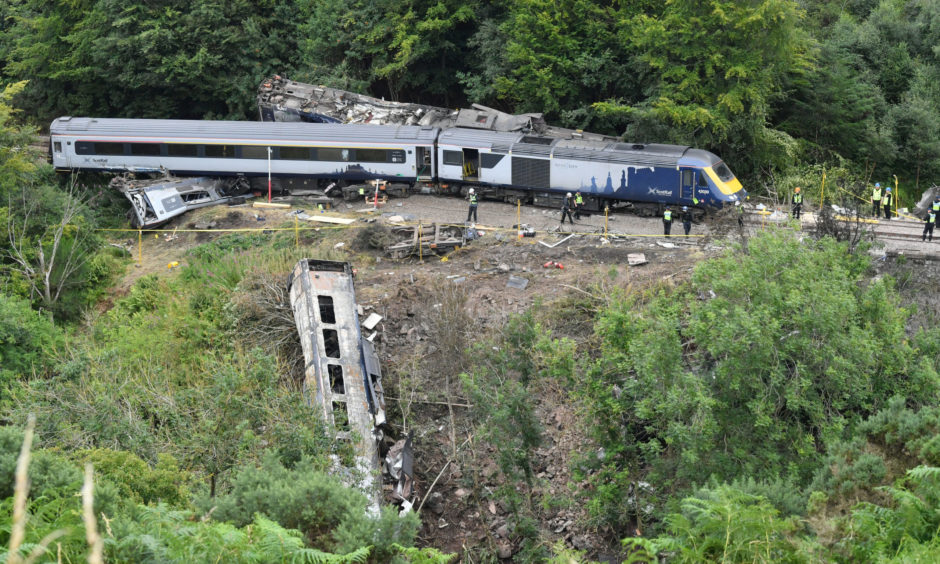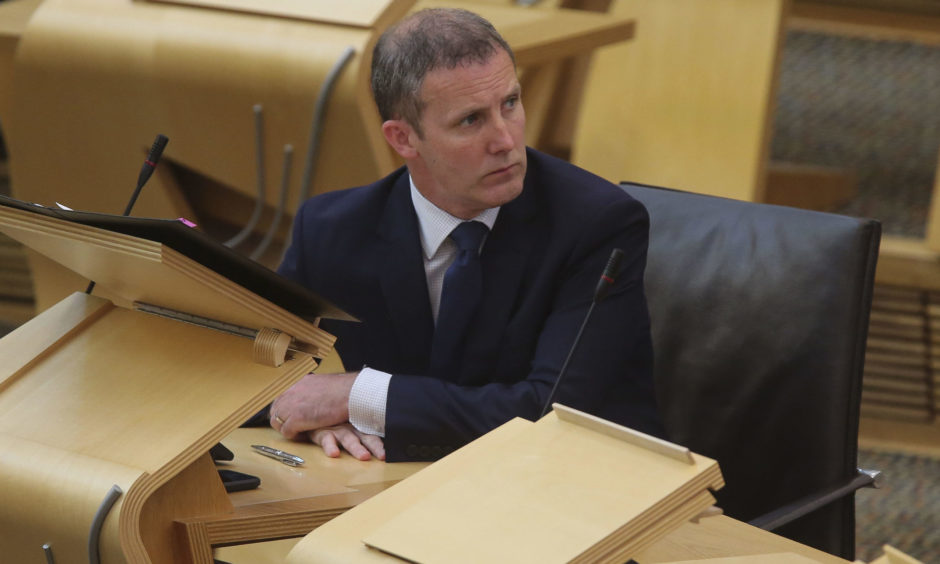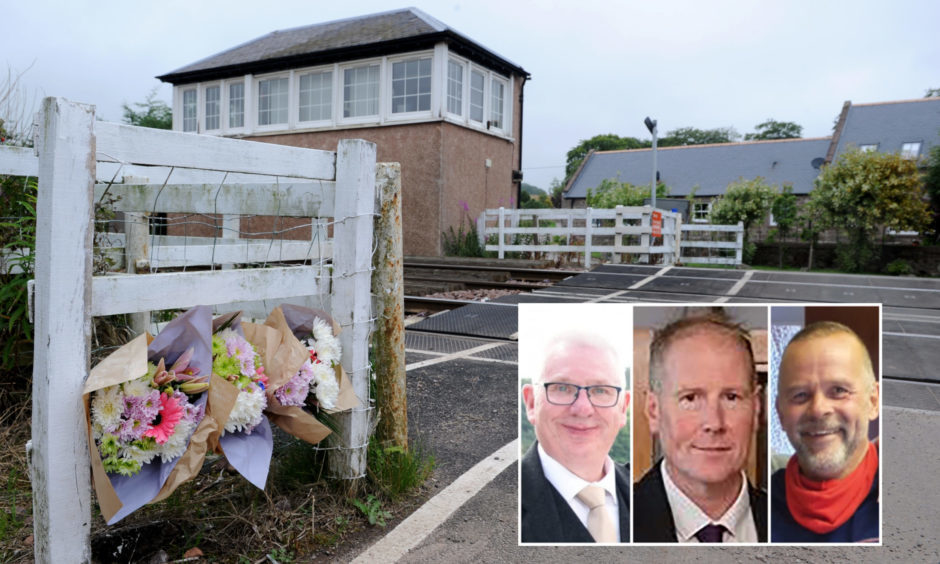The track where three men died in a train derailment in Aberdeenshire is expected to remain closed until at least October as investigators work to overcome difficulties accessing the crash site.
Driver Brett McCullough, 45, conductor Donald Dinnie, 58, and passenger Christopher Stuchbury, 62, were all killed, while six more were injured, following a landslide at Carmont near Stonehaven on August 12.
Transport secretary Michael Matheson told Holyrood’s Rural Economy and Connectivity Committee on Wednesday that he expected the line would not be open for passenger use at any time in September.
A rail shuttle service was introduced on Monday and will call at Aberdeen, Portlethen, and Stonehaven, with some services extended to start or terminate at Inverurie or Dyce.
A replacement bus service also remains in place between Dundee and Stonehaven but Scotrail has been unable to confirm the timescale for a full return of services.
Responding to a question from deputy convener Maureen Watt, Mr Matheson said investigators and engineers looking to carry out work at the site had been forced to undertake a “significant” project to build an access road to the crash site.
“The site is presently still under the control of Police Scotland while the investigation is being taken forward,” he said.
“The investigation that they’re leading, along with British Transport Police is running in parallel with the Rail Accident Investigation Branch’s investigation.
“The challenge which they’ve experienced is access to the site. It’s a very difficult area for the engineers and for the investigators to access.
“At the present moment, significant work is being undertaken to provide an access road into the site – which is now at a very advanced stage.
“Once that is completed, and once the investigation is completed, Network Rail and the engineers will be in a position where they can start the recovery phase of the process.
“My expectation is that the line will remain closed for passenger use into October given the scale of the challenge they face moving into the recovery phase once the investigation is complete.”
Mr Matheson, who started his evidence to the committee by offering his condolences to the family and friends of the three men who died in the crash and anyone else affected, also confirmed details of how the multiple investigations will take shape.
He said: “Parallel to the investigations being undertaken by the RAIB, Police Scotland and British Transport Police are investigating the circumstances of the incident with the railway inspectorate.
“These investigations are under the direction of the Lord Advocate, who will conclude whether there is a case for criminal prosecution or whether the incident will be subject to a fatal accident inquiry.”
The RAIB published initial findings last month showing the train was travelling at almost 73mph before it hit the landslip.
According to investigators, the 6.38am Aberdeen to Glasgow Queen Street service was travelling at 72.8mph prior to the incident, which it said was “within the maximum permitted speed” of 75mph on the stretch of line.
The area had been badly hit by rain and flooding in the hours leading up to the crash – causing a two-hour hold-up for passengers on the train.
The report noted the train left Aberdeen and Stonehaven on time but was stopped by a signaller at the Carmont area at 6.59am because a landslip was blocking the line between Carmont and Laurencekirk.
The train then remained just south of Carmont for more than two hours.
Permission was granted at 9.25am to start travelling north to allow passengers to get off at Stonehaven for onward travel and the train crossed on to the northbound track. Just 13 minutes later, it hit a landslip and derailed.
The RAIB believe that as the track curved to the right, the train continued in a “roughly straight line” for around 229ft before hitting a bridge parapet.
The RAIB report said: “The leading power car continued most of the way over the bridge and fell from the railway down a wooded embankment, as did the third passenger carriage.
“The first passenger carriage came to rest on its roof, having rotated to be almost at right angles to the track. The second passenger carriage also overturned on to its roof and came to rest on the first carriage.
“The fourth passenger carriage remained upright and attached to the rear power car; it almost came to a rest on the first carriage. All wheelsets of the rear power car derailed, but it remained upright.”


